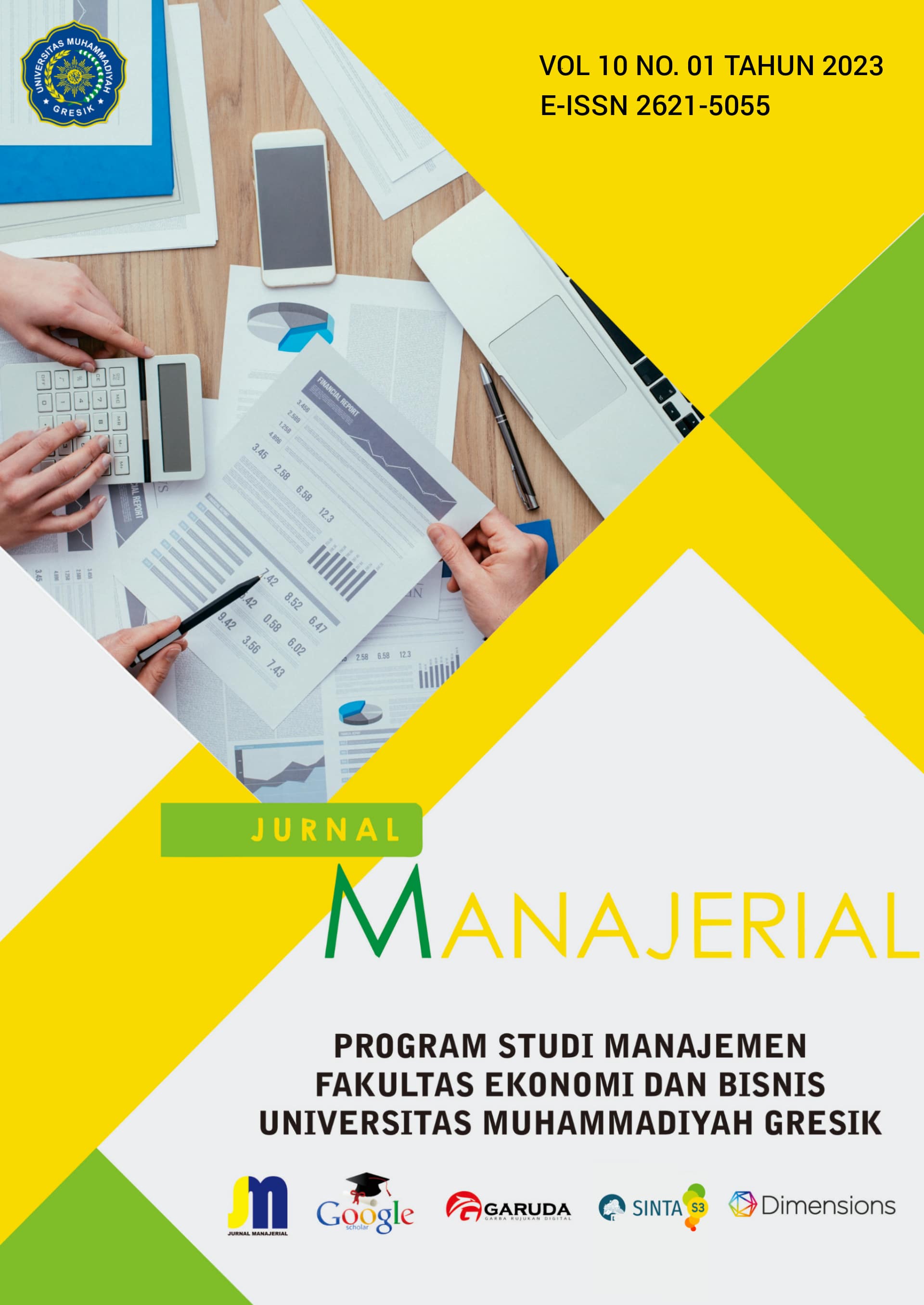Application of Analytical Hierarchy Process to Evaluate Ten Years of Mutual Fund Performance in Indonesia
DOI:
https://doi.org/10.30587/jurnalmanajerial.v10i01.4890Keywords:
Analytical, Hierarchy, Process, Mutual, Fund, PerformanceAbstract
Background – Mutual funds are one of the investment instruments whose popularity is increasing every year. Throughout August 2020 all types of mutual funds showed positive performance and equity funds became the mutual funds that had the highest performance among other types of mutual funds. Investors must be observant and careful in choosing which mutual funds are worth buying and have the best performance so that the risk of loss can be minimized. The decision-making process is not easy, so a decision-making tool called the Analytical Hierarchy Process (AHP) is needed.
Purpose – This study aims to analyze the performance of equity funds as a consideration for investors in choosing the best mutual funds with the Risk Adjusted Return (RAR) method, Sharpe Ratio, Treynor Ratio, and Jensen Alpha.
Design / Methodology / Approach – This research approach is quantitative. The population in this study are all equity funds which are then sampled with criteria of more than 10 years having the largest Asset Under Management (AUM) as of December 2020 and one mutual fund product representing an investment manager. The data analyzed are primary data and secondary data. The data analysis method in this study uses the Analytical Hierarchy Process (AHP) as a decision-making tool for 10 alternative mutual funds.
Result and Discussion – Based on the results of the analysis, it shows that the RAR method is the criterion that shows the most consistency in assessing the performance of mutual funds. This result is also supported by the opinions of several competent investment managers regarding mutual fund investment as respondents in this study. The overall results of selecting the best mutual fund performance in terms of the 4 criteria used show that the FWD Asset Dividend Yield Equity Fund is the best alternative choice with an overall inconsistency shown of less than ten percent, which means that the data comparison in this study is valid and consistent.
Conclusion – Based on the AHP method, it shows that the FWD Asset Dividend Yield Equity Fund has superior performance compared to the other eight mutual funds with the largest final weight of 0.155.
Research Implication – This research can be used as a basis for making investment decisions in mutual funds so that investors know the best performance information on mutual funds using the 4 criteria.
Research Limitations – This study has limitations related to the criteria, namely Risk Adjusted Return (RAR), Sharpe Ratio, Treynor Ratio, and Jensen Alpha and the alternative used is only 10 equity mutual funds, so that it can be developed using other criteria or adding sub-sub-criteria, and can use other mutual fund alternatives.






























 P-ISSN: 2354-8592 __ E-ISSN: 2621-5055
P-ISSN: 2354-8592 __ E-ISSN: 2621-5055 
